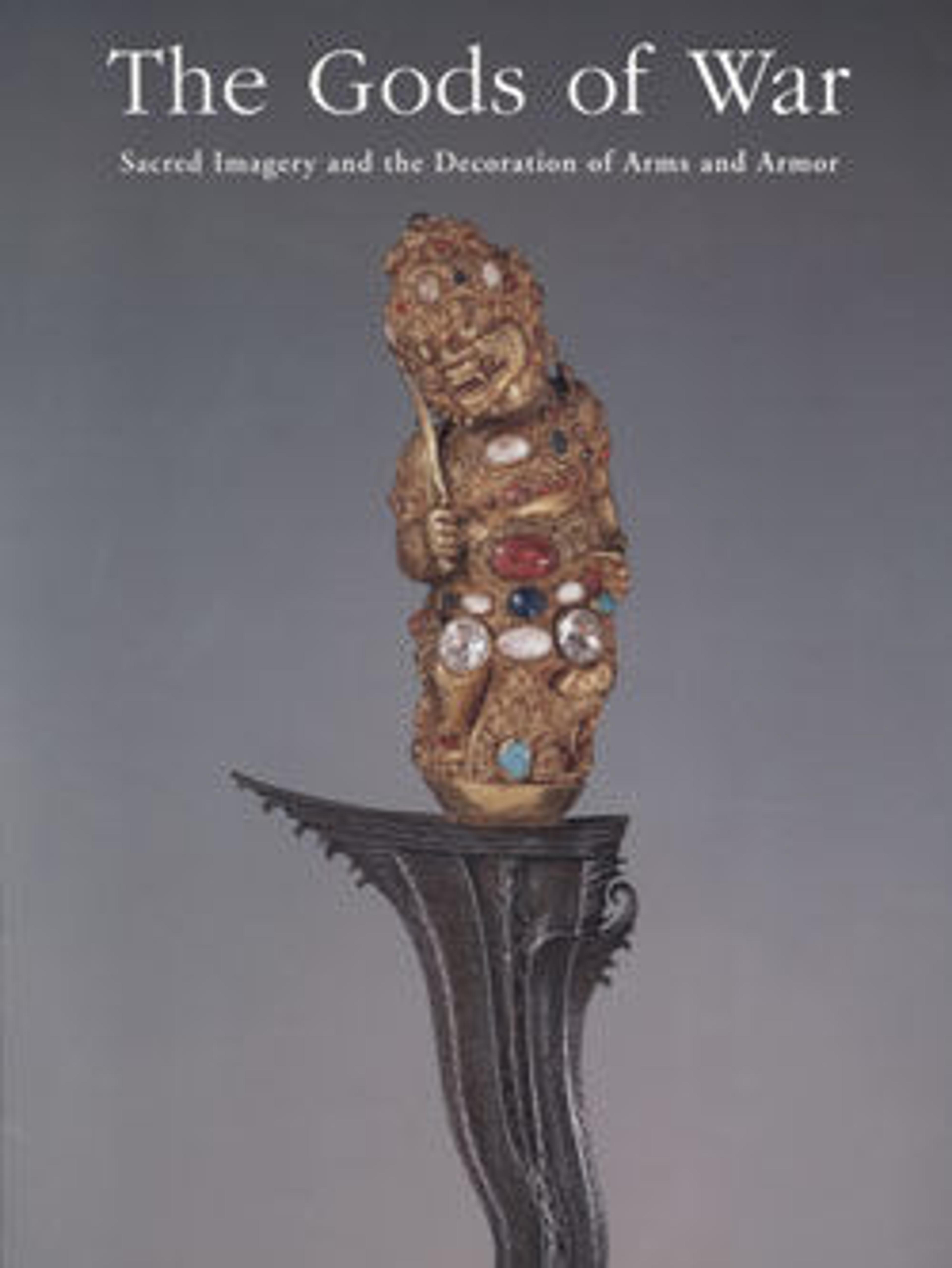Helmet Crest (Maidate)
Reverence for Hachiman, or simply Buddhist piety, may be expressed by this crest representing the finial of a shakujō, the symbolic staff carried by wandering Buddhist monks. In his incarnation as Sōgyō Hachiman, the god appears in the form of a tonsured Buddhist monk holding a shakujō in his right hand. The use of the shakujō spread with Buddhism from India into China, Tibet, and Japan. The jingling sound made by its loose rings served to announce the presence of monks seeking alms, who were prevented from speaking by a vow of silence. The noise was thought to warn insects and small animals of a monk's approach, lest they be accidentally crushed underfoot, and to ward off more dangerous animals. The shakujō was also used to perform exorcisms and in other ceremonial contexts. The number of rings is of symbolic significance. Wandering monks carried a shakujō outfitted with four rings, while six rings, as on this crest, were considered appropriate for Bodhisattva, such as Hachiman.
Artwork Details
- Title:Helmet Crest (Maidate)
- Date:18th–19th century
- Culture:Japanese
- Medium:Wood, horn, gesso, lacquer, gold
- Dimensions:H. 9 1/4 in. (23.5 cm); W. 5 in. (12.7 cm); D. 1 1/8 in. (2.9 cm); Wt. 2.4 oz. (67 g)
- Classification:Helmet Crests
- Credit Line:Bequest of George C. Stone, 1935
- Object Number:36.25.253
- Curatorial Department: Arms and Armor
More Artwork
Research Resources
The Met provides unparalleled resources for research and welcomes an international community of students and scholars. The Met's Open Access API is where creators and researchers can connect to the The Met collection. Open Access data and public domain images are available for unrestricted commercial and noncommercial use without permission or fee.
To request images under copyright and other restrictions, please use this Image Request form.
Feedback
We continue to research and examine historical and cultural context for objects in The Met collection. If you have comments or questions about this object record, please contact us using the form below. The Museum looks forward to receiving your comments.
